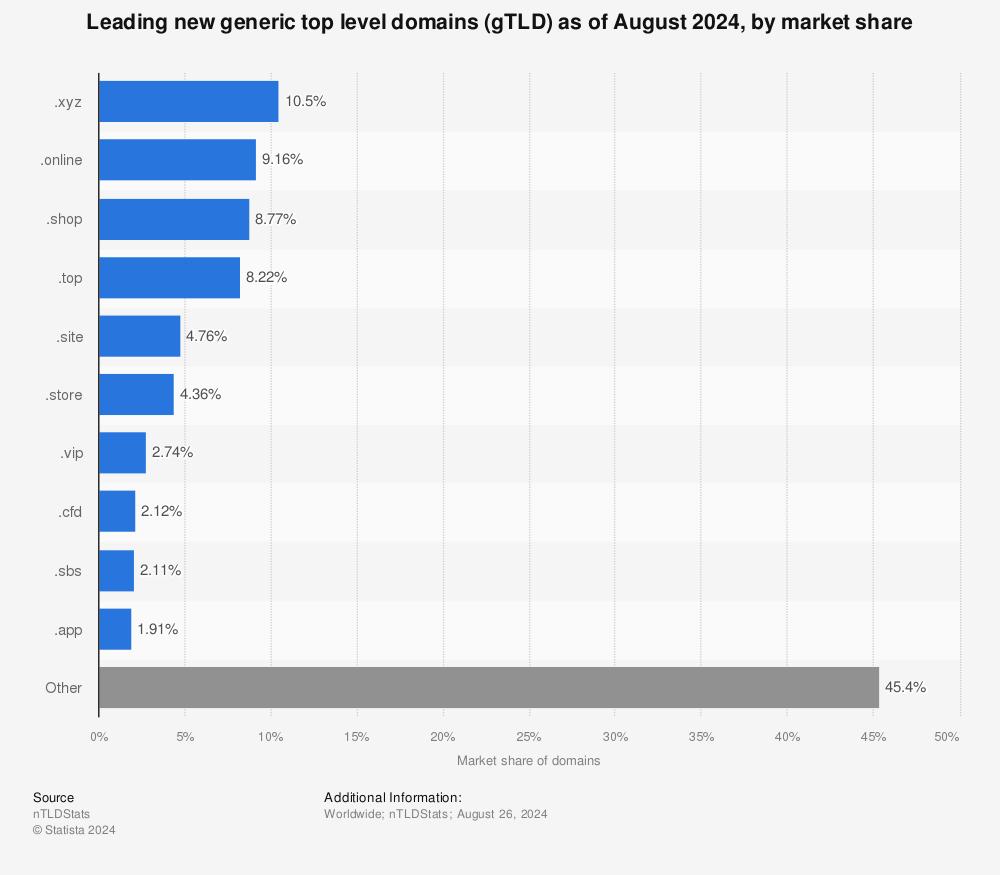Table of Contents
- Understanding the Latest Trends in Domain Sales
- Factors Driving Todays Domain Market Valuations
- Top Domain Sales of the Day and What They Mean
- Strategic Tips for Acquiring High-Value Domains
- Navigating the Post-Purchase Domain Ownership Landscape
- Q&A
- The Way Forward
Understanding the Latest Trends in Domain Sales
In recent years, the domain sales market has experienced significant evolution, driven by advancements in technology and the growing importance of online identity. With a surge in entrepreneurship and digital businesses, the demand for memorable and brandable domain names has reached new heights. Investors and businesses alike are looking for domains that not only reflect their brand identity but also have the potential for substantial resale value.
Among the most notable trends currently shaping the landscape of domain sales are:
- Short and Catchy Domains: The trend toward shorter domain names continues to dominate. Prospective buyers understand that brevity often enhances memorability and typeability.
- Premium Extensions: While .com domains remain popular, there’s a notable increase in the desire for alternative extensions like .tech, .ai, and .io, appealing to niche markets and tech startups.
- Investment in Brandable Domains: There is a growing recognition that a strong domain name can significantly influence a brand’s market entry and longevity. As such, more investors are scouting for brandable domain names that evoke emotion or curiosity.
The valuation of domain names is becoming increasingly data-driven, leveraging analytics and market trends to guide pricing strategies. To illustrate this, recent sales figures highlight key insights in domain valuation:
| Domain Name | Sale Price | Industry |
|---|---|---|
| TechGiant.com | $2,500,000 | Technology |
| HealthBytes.io | $750,000 | Healthcare |
| EcoMarket.ai | $1,200,000 | Sustainability |
This data underscores the potential returns in the domain market, as well as the need for strategic planning in acquiring and selling domain names. As we navigate this dynamic ecosystem, staying informed of these trends is crucial for both buyers and sellers aiming to capitalize on the evolving digital landscape.


Factors Driving Todays Domain Market Valuations
The landscape of domain market valuations is influenced by various factors that reflect the evolving nature of digital presence and internet usage. Supply and demand dynamics play a pivotal role; as more businesses seek to establish their online identities, the competition for premium domain names intensifies. The scarcity of desirable domains can inflate their value significantly, often pushing prices beyond the reach of small businesses. Additionally, the rise of startups and e-commerce ventures has led to an increased demand for unique and memorable domain names, further driving up valuations.
Another critical aspect is the importance of branding in today’s digital economy. A strong domain name can significantly enhance a company’s brand recognition and credibility. Enterprises are now more willing to invest considerable resources in obtaining domain names that not only resonate with their target audience but also improve their search engine visibility. As companies acknowledge that a strategic domain choice can lead to higher traffic and conversions, they are likely to allocate higher budgets for acquiring such assets.
market trends such as the growth of emerging technologies—like blockchain and virtual reality—are reshaping the domain landscape. For instance, the emergence of new domain extensions (gTLDs) has opened up fresh avenues for trademark protection and alternative branding strategies, which can substantially affect the pricing of domains. Companies are also beginning to recognize the potential for domains to serve as digital real estate, leading to speculative investments that further influence market valuations.


Top Domain Sales of the Day and What They Mean
Today’s top domain sales highlight the dynamic landscape of the digital marketplace, showcasing how valuable a memorable web address can be. Each sale not only reflects current trends but also indicates where businesses and entrepreneurs are steering their online strategies. For instance, a recent sale of a two-letter domain can signify the increasing demand for brands that want short and impactful names to elevate their online presence.
Several key domains sold today stand out due to their implications for future sales trends. For example, domains like Brandify.com and WebGenius.net suggest that businesses are increasingly willing to invest in branding through high-quality domain names. This pattern highlights a shift towards branding significance, where an attractive domain can provide a competitive edge in crowded markets. The shift indicates a clear strategy: companies recognize that a strong domain can translate into customer trust and enhanced credibility.
| Domain Name | Sale Price | Buyer Intent |
|---|---|---|
| TechSavvy.com | $150,000 | Tech Startup Expansion |
| TravelWise.com | $95,000 | Travel Blogging Platform |
| EcoFriendlyTips.com | $75,000 | Sustainability Project |
As these sales illustrate, investing in premium domains is more than just a trend—it’s a strategic maneuver for businesses aiming to craft a lasting online identity. With increased online competition, the necessity for standout domain names is apparent. Buyers are not only looking for a web address but are securing assets that have the potential to appreciate in value, akin to real estate in the digital realm. Today’s sales reinforce the idea that the right domain can significantly impact a brand’s trajectory.


Strategic Tips for Acquiring High-Value Domains
When it comes to acquiring high-value domains, understanding the market is crucial. Researching current trends and domain sales can provide insight into what makes a domain valuable. Consider using domain auction platforms and marketplaces to identify popular keywords, brand names, or industry-specific terms. Additionally, evaluating domain history through tools that provide insights into previous ownership and performance can help gauge future potential.
Once you have identified potential domains, negotiation skills become key. An effective strategy includes not only knowing the domain’s worth but also being prepared to articulate its value proposition. Engage with sellers to understand their perspective and be open to discussions. Create a shortlist of domains and prioritize them based on your objectives. Verify if they have a strong backlink profile, traffic statistics, and overall credibility in their niche.
The timing of your purchase can significantly influence domain acquisition success. Domains may fluctuate in value based on seasonal trends; thus, monitoring the market regularly is beneficial. Additionally, leveraging domain brokers can provide access to premium domains that might not be listed publicly. A well-structured approach, coupled with strategic partnerships, can lead to securing valuable digital assets that enhance your online presence.


Navigating the Post-Purchase Domain Ownership Landscape
After a domain is purchased, new owners often face a maze of options and responsibilities that extend beyond the transaction. Ownership signifies more than just possession; it demands an astute strategy for leveraging the domain’s potential. Understanding domain management essentials is crucial. Owners should familiarize themselves with domain registration details, renewal timelines, and hosting services to ensure their online presence remains uninterrupted and effective.
In addition to the basics of management, the value of a domain can fluctuate over time, influenced by market trends and digital marketing shifts. New owners must be aware of how external factors, such as SEO algorithms and competitive analysis, can alter the landscape. Being proactive in these areas can help maximize the domain’s visibility and drive targeted traffic. Here are key aspects to consider:
- Branding Potential: Craft a clear branding strategy that aligns with your market and audience.
- SEO Best Practices: Implement on-page and off-page SEO tactics to boost your domain’s search engine ranking.
- Content Strategy: Regularly update your website with relevant, high-quality content to engage visitors.
Navigating the complexities of domain ownership also involves understanding the secondary market. Owners contemplating whether to sell or hold should consider current valuations and potential resale profits. Knowledge of your domain’s market and similar sales can make a significant impact. Below is a simple table showcasing recent domain sales for context:
| Domain Name | Sale Price | Date Sold |
|---|---|---|
| exampleone.com | $25,000 | March 2023 |
| exampletwo.net | $15,000 | April 2023 |
| examplentd.org | $10,000 | May 2023 |
Q&A
Q&A: Understanding Today’s Domain Sales
Q1: What is meant by “domains sold today”? A1: “Domains sold today” refers to the specific web addresses that have been purchased in a given day. Each domain is unique and often represents a business, brand, or personal project. Tracking these sales can provide insights into trends within the digital marketplace.Q2: Why do people buy domain names? A2: People buy domain names for various reasons, including establishing an online presence for a business, personal branding, or investment purposes. A well-chosen domain can enhance credibility, improve discoverability, and support marketing efforts.
Q3: How can I find out which domains were sold today? A3: There are several platforms and websites that track domain sales, such as DNJournal, NameBio, and Sedo. Many of these resources provide daily updates on recent sales, including the prices and buyers (if disclosed).
Q4: What factors affect the price of a domain name? A4: The price of a domain can be influenced by several factors: length, keyword relevance, brandability, extension (like .com, .net), and market demand. Short, memorable names with popular keywords typically command higher prices, while more niche names may be less costly.
Q5: What should I look for when purchasing a domain? A5: When purchasing a domain, consider its length, ease of spelling, relevance to your brand, and the extension you want. Additionally, ensure that it’s not already trademarked and check its history for prior use, which could affect its value.
Q6: Are there any specific trends in domain sales today? A6: Domain sales trends can fluctuate based on market demands, technological advancements, or emerging industries. For instance, the rise of e-commerce and online services has increased the demand for domains in those sectors, particularly those with keywords related to health, finance, and technology.
Q7: Can I sell my domain later? A7: Absolutely! Many individuals and businesses buy domains as an investment, hoping to sell them later at a profit. Success in reselling often depends on the initial value, marketing strategy, and network within the domain marketplace.
Q8: What are the risks of investing in domain names? A8: Like any investment, domain buying carries risks. Primarily, there’s no guarantee that your domain will appreciate in value. Market demand can change, and factors such as legal disputes over trademarks can affect ownership. It’s essential to research and choose wisely.
Q9: How can I stay updated on future domain sales? A9: To keep abreast of domain sales, subscribe to newsletters from domain marketplaces, follow relevant blogs, and engage in forums dedicated to domain investment. Social media platforms also host discussions and updates that can be informative.
With this Q&A, we hope to shed light on the fascinating world of domain sales and help you make informed decisions in this dynamic digital landscape.

